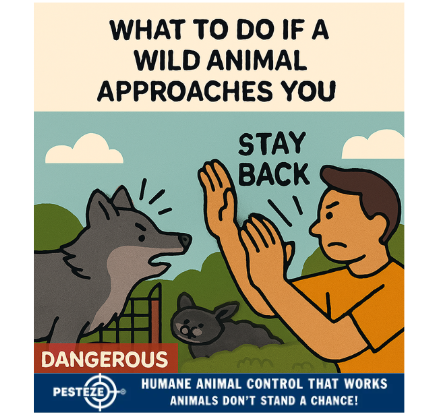WHAT TO DO IF A WILD ANIMAL APPROACHES YOU

WHAT TO DO IF A WILD ANIMAL APPROACHES YOU
SUMMARY
Wild animal encounters can be unpredictable and potentially dangerous. Whether you're hiking, camping, or in your own backyard, knowing how to respond when a wild animal approaches is critical for your safety and theirs. This guide offers calm, practical, and humane strategies to handle these situations without escalating conflict. From body language to retreat tactics, you’ll learn how to protect yourself while respecting wildlife boundaries.
FEATURES
-
Stay Calm and Still: Avoid sudden movements that may provoke aggression or fear.
-
Assess the Animal’s Behavior: Determine if the animal is curious, defensive, or aggressive.
-
Avoid Eye Contact: Learn when to avert your gaze to reduce perceived threat.
-
Back Away Slowly: Use controlled movement to create distance without triggering pursuit.
-
Protect Children and Pets: Keep vulnerable companions close and quiet during encounters.
-
Report the Encounter: Notify local wildlife authorities if the animal shows unusual or threatening behavior.
GUIDE DESCRIPTION
Encountering a wild animal can be startling, but your response can make the difference between a peaceful retreat and a dangerous situation. This guide provides essential steps to follow if a wild animal approaches you, helping you stay safe while minimizing harm to the animal.
The first and most important step is to remain calm. Animals are highly sensitive to human energy and sudden movements. Avoid running, shouting, or waving your arms, as these actions may be interpreted as threats or prey behavior.
Observe the animal’s body language. A curious animal may simply be investigating, while one that growls, hisses, or charges may be defending territory or offspring. If the animal appears calm, slowly back away while keeping it in view. Do not turn your back or run, as this can trigger a chase response.
Avoid direct eye contact, especially with predators like bears or mountain lions. Staring can be seen as a challenge. Instead, keep your gaze soft and focused on the animal’s general direction.
If you have children or pets with you, gather them quietly and keep them close. Pick up small children and leash pets to prevent erratic movements or noise that could escalate the situation.
Once you’ve safely distanced yourself, report the encounter to local wildlife authorities. This helps track animal behavior and ensures public safety, especially if the animal was acting unusually or appeared sick.
By following these steps, you’ll reduce risk and contribute to responsible wildlife stewardship. Respect, awareness, and calm action are your best tools in any wild animal encounter.
- Amy Chang


Comments 0